![]()
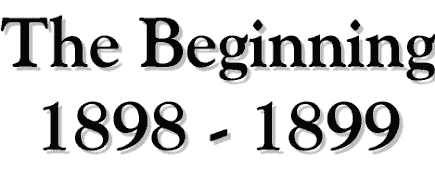
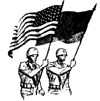 When Johnny came marching home after the Spanish American War, he did not
receive quite the hero's welcome he expected. When Johnny came marching home after the Spanish American War, he did not
receive quite the hero's welcome he expected.Many Spanish American War veterans were mustered out of the service far from home and left to find their own transportation back. Most arrived home virtually penniless only to discover that their hero status was no help in finding employment. Often the jobs they had given up when they answered the president's call for volunteers had been taken by men who had stayed safely at home. Treatment of veterans who were sick or wounded was especially shoddy. Even the most severely disabled veterans were denied hospital care or medications. Nor were there any government programs to help returnees rehabilitate themselves so that they could resume their places in society. They were given two months' pay ($31.20 for a private), discharged, and sent home to their families. Many veterans were embittered by the treatment they received. They had won property in two oceans, and, in the process, new-found status as a world power for the United States. The federal government now had an annual surplus of $46 million in revenue over expenditures and surely could have spared the funds to aid its needy war veterans. And yet, all the country offered veterans in return for their services was pain, sorrow, and an early grave. The war had caused no visible damage to property inside our borders, so it was difficult for officials and citizens to see the need to spend more money on a war that was officially over. Politicians were not the only ones to turn their backs on the Spanish American War veterans. The two major organizations for Civil War veterans also rebuffed the nation's newest veterans. Both the North's Grand Army of the Republic (GAR) and the South's United Confederate Veterans (UCV) refused them a place in their ranks. This refusal to admit new blood was the same shortsightedness that brought about the demise of every previous veteran's organization. With no organization to plead their cause, the veterans were left to protest their treatment on their own. For more than a year the cries of the lone veteran went unheeded. Then, within the space of several months, the seeds of a solution were planted in two locations - one to the east of the Mississippi River and one to the west. In both Columbus, Ohio, and Denver, Colorado, veterans began to band together to jointly attack their problems. Like the war with Spain, the veterans fight for better treatment from their government would now be conducted on two fronts. The East American troops in the Eastern theater - in Cuba - were the first to cease fighting the Spanish and return home. The 17th Infantry Regiment was one of the first troops to come home. Following its return from Cuba, the 17th spent the next few months replacing both men and equipment. Once the regiment was back up to strength, it was shipped to the Philippines to replace a unit of volunteers. First, though, men who were sick or wounded were given two months' pay and discharged. No allowances were made for medication, hospital care, food, or transportation home. Since they were of no further use to the Army or the government, the men because the problem of Columbus, Ohio, their own hometowns or their families. Among the first to grapple with the problems of these disabled soldiers was a small group of their former comrades. Unlike most members of the 17th Infantry Regiment, these compassionate men were not career soldiers, but had been discharged upon their return to Columbus because their terms of enlistment had expired. It was their hope that they could help their less fortunate comrades by founding a veteran's organization. Thirteen former members of the 17th Infantry Regiment combined their efforts to make this dream a reality. Of these thirteen, two men stood out as the leaders: James C. Putnam and James Romanis. Both men had been discharged as privates. They also shared a recent and firsthand knowledge of the horrors of war, a deep compassion for their fellow man, and the willingness to work to rectify what they saw as unfair treatment of veterans of the Spanish American War. Perhaps it was because Romanis and Putnam each worked toward their common goal from different perspectives that they ultimately succeeded. No veteran's organization before theirs had ever survived its generation. The rules and practices that gave their organization its longevity did not even exist at its inception. Instead, they grew out of the beliefs and determination of its founders - and out of the founders' feeling there was no equal to the bonds of loyalty forged between men in the crucible of war. Romanis and Putnam succeeded not by strengthening or changing these bonds, but by utilizing them for the common good. On September 29, 1899, James Romanis called the first meeting. His intention was to form an association for mutual benefit in getting pensions, claims, etc., the help the men of the 17th Infantry. During the meeting, someone suggested that the association's membership should be drawn only from this regiment. But Putnam reminded them that this limiting idea has sounded the death knell for other organizations. He suggested that they find a way to make their association endure forever, so that it would be "evergreen." A motion was made to allow men who had served honorable in any overseas outfit during the Spanish American War to join. It passed without a dissenting vote. Further discussion eventually broadened the right to membership to everyone who had been awarded a Campaign Medal by our government for service in any war or conflict. The scope of this motion would allow survivors of the 1846 war with Mexico to join if they so desired. More important, its passage ensured the association's longevity by granting the right to membership to those who qualified in any future war. The association would be "evergreen." A second meeting was scheduled for October 7, 1899. Several other decisions reached that night would greatly influence the future of the organization. The first was that all members of the American Veterans of Foreign Service (AVFS) would be considered equals. After all, they were an organization of previous military men, with the key word being "previous." No allowance was made for special treatment of those who had help superior rank during their previous service. This decision was understandable, considering that of the original thirteen who met, only one had been an officer. Until the founding of the Vietnam Veterans of America some seventy years later, it would be the only major veteran's organization founded by enlisted men. The second decision was to prepare for anticipated future expansion. To properly channel this hoped-for growth, a provision was made for the formation of additional units. They would be administered locally and be called "camps." The unit they had just founded in Columbus would be known as "Headquarters Camp Number One." All of the Columbus officers would hold dual positions, serving in national as well as local capacities. The final noteworthy decision reached that night was to acquire a logo or emblem so that their deeds would not be forgotten with the passage of time. After some discussion, they settled on the Cross of Malta, the emblem which had decorated the banners of the Order of the Knights of St. John during the Crusades. The order had been famous for caring for its wounded comrades, a fact which was not lost on the American Veterans of Foreign Service. Once the organization's foundation had been laid, its members moved rapidly to obtain national stature for their group. On the incorporation application, the principal business location of the corporation was listed as Columbus, Franklin County, Ohio. The purpose for which the corporation had been formed was given as, "For social enjoyment of the membership of said association and their families and friends. The promotion of the mutual interests of all such and more especially to preserve the reminiscences of the camps and field beyond the borders of our native land" The charger was granted on October 10, 1899, just days after the organization's second meeting. Within a few weeks, new camps were formed in Cincinnati, Hamilton, Marysville, Delaware, and Marion, Ohio; and in Sparta, Illinois, and Portsmouth, New Hampshire. The West The First Colorado Voluntary Infantry Regiment returned to San Francisco, where the regiment was mustered out September 8, 1899. So proud of their soldiers were the people of Denver that they ignored the usual policy of leaving men who had "mustered out" to find their own way home from the mustering-out point. By public subscription of funds, they hired a special train to transport the men home to Denver. On September 14th, the soldiers were greeted by 75,000 citizens of their capital city. After a joyous parade and stirring speeches of appreciation for the job the First had done in the Philippines, General Irving Hale ordered his men to fall out for the last time. Problems began almost immediately for the former members of the First. Like their eastern counterparts, many discovered that the jobs they had held before the war had been taken by others. And those who were unable to work because of disease or crippling wounds belatedly found they had no prospects of rehabilitation or financial assistance from the federal government. Veterans' employment woes were further increased by the depression that gripped the nation. Not only had their old jobs been taken by others, but new ones were almost nonexistent. A born leader, Irving Hale was a man of tremendous energy and vision. His enthusiasm and loyalty toward his home state and the men who had served under his command made him a natural selection to lead many civic and organizational projects. After the First was disbanded, Hale kept in contact with his men. He talked to those he met on the streets and visited some of them in their homes. What he encountered touched him deeply. It seemed especially unjust to him that men who had suffered during wartime service were now destined by an uncaring government for further suffering and starvation. Hale helped many veterans from his personal funds. He soon became convinced, however, that the only way to right all the wrongs being imposed upon his returning veterans was to form an association. On November 18th and 23rd, 1899, Hale and other former officers from the First discussed the possibility of forming a veteran's association. General Hale, acting as temporary chairman, appointed a committee to draft a constitution. Another meeting was held on December 12th. Twenty-eight men attended this meeting. The committee which was appointed to draft a constitution, Henry Lippincott, Charles H. Anderson, and Charles B. Lewis presented their report. They all reported in favor on an "immediate formation of a permanent organization of officers and enlisted men, comprising the land forces of the United States who served honorable in the distant Philippines, to sustain the honor and supremacy of our beloved flag, and having for its objects: The perpetuation of the memory of the achievements of the participants in this striking and unique epoch of our country's history; the perpetuation of the memories of our departed companions in arms, many of whom are now sleeping their last sleep under the palms of the tropics, or in the sand of the deep seas; to cement and strengthen the bonds of friendship formed in camp and bivouac, on long lonely voyages to the Orient, in the trenches and on lonely outposts, in skirmish and battle among rice ridges and swamps of the Philippine Islands; to collect and preserve the relics, records, books and other historical data relating to the Spanish-American War and maintain and foster true patriotism and love of our country and its institutions." This report was unanimously adopted and parts of were later used in other statements of the organization's philosophy. The adoption of the committee's report was followed by the election of Hale as President and Frank Noble as Secretary. They were charged with contacting all former commanding officers or regiments that had comprised the Eighth Army to suggest they form local units. If all went according to plan, the units would be merged into a single association at the reunion in Denver the next year. The name the former men of the First chose for their new association was the "Colorado Society of the Army of the Philippines." Former Lt. Colonel Henry Lippincott, who had served as Deputy Surgeon General of the United States Army and Chief Surgeon of the Pacific and Eighth Army Corps, maintained that the government should furnish medial care for those who needed it and provide pensions for veterans unable to support themselves and their families due to service-connected disabilities. Since their jobs had been taken by men who did not fight in America's war with Spain, they felt that those who did fight should be considered first for federal jobs. General Hale told the assembled group that he favored forming a separate association from the one they had just founded to help them press the government for assistance. A roster of membership for the Colorado Society of the Army of the Pacific was started at this meeting. Each man signed only his name with no reference to past rank. The paper on which each man signed his name also carried the principles of the association. "We, the undersigned, agree to form an organization to be of mutual aid to our comrades and to perpetuate the memory of those who died in the service of their country and to keep alive the glorious deeds of bravery and courage performed in field of war. This organization will be non-political." (By "non-political," they meant that the organization would not favor one political party, not that it would stay out of politics entirely. They certainly did not want to rule out the possibility that their group could and would replace the Grand Army of the Republic as a political power). While many of the initial goals of the Colorado Society of the Army of the Philippines were similar to those of the American Veterans of Foreign Service, there were two important differences between the groups. First as the name of the Army of the Philippines suggests, membership in the society was open only to veterans from one branch of service, the Army. This automatically excluded personnel of the Navy and Marine Corps. Second, it restricted eligibility to those who had served in the Philippine Theater of War and only in the Spanish American War. If these rules were left standing, the Society, like all previous veteran's organizations, would die out with its generation. In time, the Colorado Society of the Army of the Philippines would not only adopt innovative membership rules that would assure its longevity, but it would also merge with the organization that first formulated those new rules - the American Veterans of Foreign Service. Together, these two organizations would form the nucleus of the present-day Veterans of Foreign Wars. |

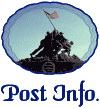


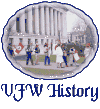
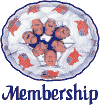
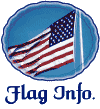


 E-Mail
E-Mail